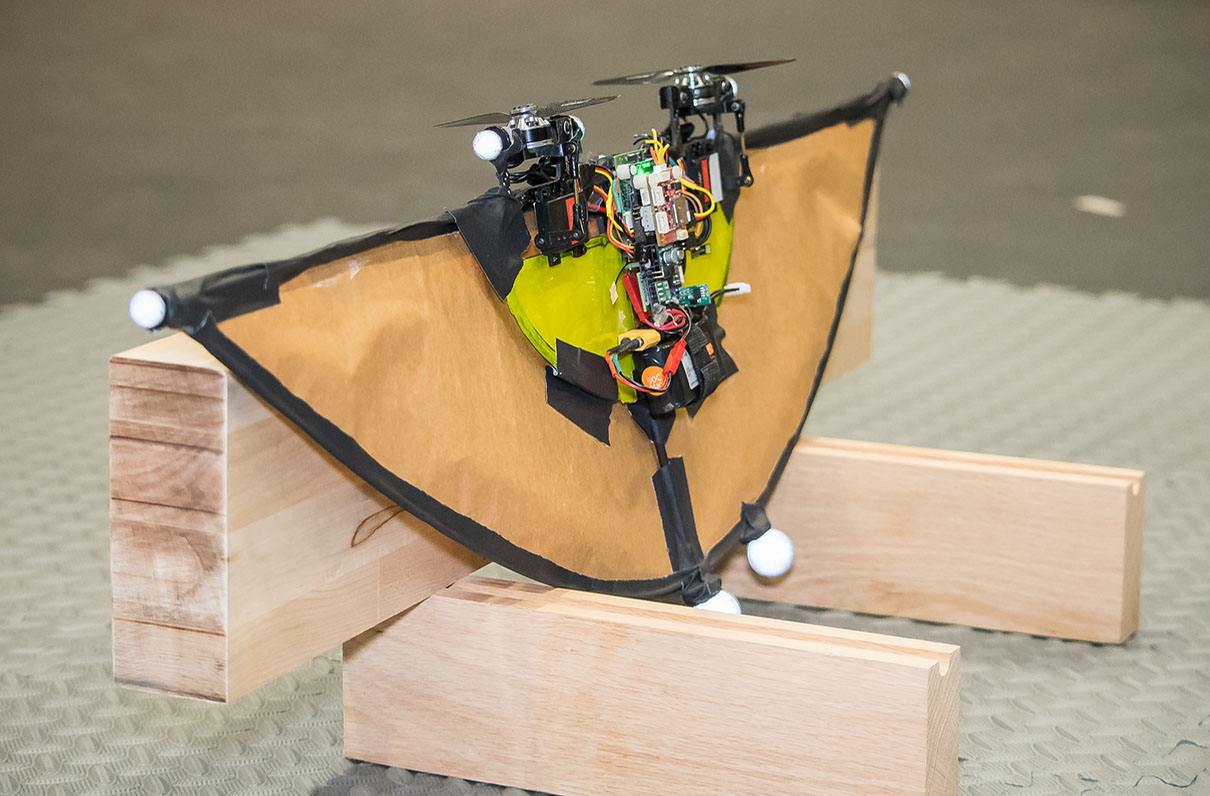Imagine an unmanned aerial vehicle (UAV) that is able to transform in flight from flying like a helicopter to fixed-wing flying, much like a V-22 Osprey. The U.S. Army Research Laboratory (ARL) not only is imagining but also experimenting with just such an aerial vehicle.
Stephen Nogar, Ph.D., a post-doctoral researcher at the ARL's Vehicle Technology Directorate, says that in a transforming vehicle, weight is everything.
“ARL is working on aggressive, small UAV flight in a GPS-denying environment," Nogar says. "We have seen quad-rotor and fixed-wing aircraft that are not very efficient and determined the need for a vehicle with versatility, efficiency, and the agility of both types of aircraft but in a small handheld package."
Nogar's UAV weighs a little more than a half pound, has a 10-inch-wide carbon fiber frame with a plastic wing coating its surface and uses two rotors that tilt.
"The UAV has an IMU (internal measurement unit), an electronic device that measures a body's specific force and angular rate using a combination of accelerometers and gyroscopes, a magnetometer, and barometer," Nogar says. "We are focusing on getting cameras on board and a smartphone chip for vision processing. If there's no GPS on board, you can use the cameras to track the environment around the vehicle and have it localize itself."
Nogar has flown the UAV indoors using a motion capture system to help it navigate.
"We envision the vehicle as flying completely autonomously, that takes off and lands vertically, while having periods of fixed wing flight," he says. "If it is outdoors, it could use GPS, but the motion capture system is a backup to help it navigate if necessary in a GPS-denied environment."
Nogar notes that at this point in the UAV's development, he has a good idea of the control and dynamics of the vehicle but is working on perception tests for the drone.
"By using cameras, we will have to figure out how we know where the vehicle is, if we want it to do fast or slow maneuvers and to be able to avoid obstacles," he points out. "Obstacle avoidance is the next step for us."
The focus of the transforming UAV, Nogar says, is on ISR (intelligence, surveillance, and reconnaissance).
"We envision every soldier having an ISR asset like this in the future to look over the next hill or around the next corner," he says.
